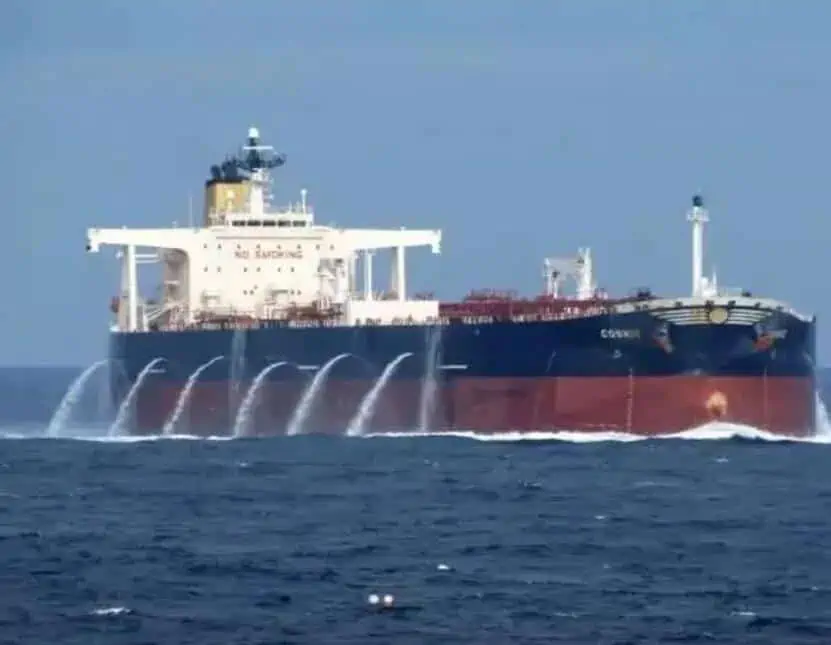Ship Ballast Tank is to point to the ship’s ballast tank to load ballast to adjust the ship’s draft and metacentric height. It is an operation to ensure that the ship has good seaworthiness. Water is commonly used as ballast.
In bulk cargo transportation, since the cargo flow is usually one-way, the ship has to sail for a long distance without a load. In order to obtain the necessary draft to ensure the efficiency of the propeller and to obtain the necessary metacentric height to ensure safety. The ship must be loaded with a large number of of ballast water.

What is a ship’s ballast water system?
Ballast water is critical to the safe and efficient operation of shipping. Wing and double bottom tank ballast water level measurement is used to control trim, draft and heel of ships, reduce hull deformation and improve empty space seaworthiness.
At the same time, ballast water poses a serious threat to marine ecology, economy and public health. In order to protect the ecological environment, protect public health and property safety. According to the International Maritime Organization regulations, ships must be equipped with ballast water treatment equipment.
The ship ballast water system varies according to the type, purpose and tonnage of the ship. The location, size and number of ballast water tanks on the ship also vary. Generally, ships can use the fore peak tank, stern peak tank, double bottom tank, side tank, top side tank and deep tank as ballast water tanks, and cargo oil tankers can use cargo oil tank and ballast tank.
- There are three types of pipeline layout for ship ballast water system: branch pipe type, main pipe type and pipe tunnel type;
- The suction pipe in the ship’s ballast water tank should also have the function of adding water;
- The ballast suction port of each ballast water tank shall be arranged at a position conducive to the discharge of ballast water;
- In order to meet the working characteristics of the ballast water system and simplify the pipeline. The barge valve box is often used to adjust the ballast water in each ballast water tank;
- The ship’s ballast water system shall be able to transfer the ballast water in and out of each ballast tank of the whole ship or transfer each other. Also can not use ballast pump, outboard seawater flows into ballast water tank automatically by pressure difference.
There are many types of ballast water management systems, all of which require measurement of incoming water flow, tank level and system pressure for control purposes. Since these instruments are essential, reliability and stability are an absolute must.
In addition to ballast water systems, Sino-Inst can also provide professional monitoring solutions for different systems such as water circulation cooling systems, ship water supply and ship sewage treatment.

Extended Reading: How many types of level transmitters are there?
Ship Ballast Tank Pressure Measurement
A pressure transducer (Pressure Transducer) is a device or device that can sense pressure signals and convert the pressure signals into usable output electrical signals according to certain rules.
A pressure sensor usually consists of a pressure sensitive element and a signal processing unit. According to different test pressure types, pressure sensors can be divided into gauge pressure sensors, differential pressure sensors and absolute pressure sensors.
Pressure sensor is the most commonly used sensor in industrial practice. It is widely used in various industrial automatic control environments, involving water conservancy and hydropower, railway transportation, intelligent buildings, production automatic control, aerospace, military industry, petrochemical, oil wells, electric power, ships, machine tools , pipeline and many other industries.
The first type of pressure sensor commonly used on ships is the pressure sensor that measures the pressure of pipes and tanks. Pressure measurement for ships and other long-term operations in relatively harsh environments such as seawater and river water.
The sensor has a solid measuring element, which is not afraid of the influence of marine microorganisms, sediment, etc. on the sensor. IP68 protection level, 316L, titanium alloy outer shell, can work stably and reliably for a long time. It is widely used in the fields of ship ballast tank, ship boiler liquid level, pressure and other fields. It can simplify measurement and improve work efficiency.
Read more about: Hydrostatic Submersible Level Transmitter-Straight Rod Insertion
Featured Pressure Transmitters for Ship Ballast Tank
Ship Ballast Tank Level Measurement
Ballast water (ballast water) is water specially injected to keep a ship balanced.
Ballast water is an important guarantee for the safe navigation of a ship, especially for a ship that does not carry an appropriate amount of cargo. An appropriate amount of ballast water can ensure sufficient draft of the ship’s propeller, minimize the shaking of the ship’s hull caused by the ship’s wake, and maintain propulsion efficiency.
Corrosion-resistant contact liquid level meters and non-contact liquid level meters can be used on ships to provide effective monitoring for Ship Ballast Tank liquid level management.
Featured Level Meters for Ship Ballast Tank
Read more about: Ultrasonic Tank Level Sensors for Tank Level Monitoring
More Pressure & Level Measurement Solutions
Sino-Inst is a manufacturer of pressure sensors and liquid level sensors. We offer a wide range of transmitters for marine vessels (drilling platforms, ship ballast tanks, seawater pressure, seawater level).
If you have any technical questions, please feel free to contact our sales engineers.
Request a Quote

Wu Peng, born in 1980, is a highly respected and accomplished male engineer with extensive experience in the field of automation. With over 20 years of industry experience, Wu has made significant contributions to both academia and engineering projects.
Throughout his career, Wu Peng has participated in numerous national and international engineering projects. Some of his most notable projects include the development of an intelligent control system for oil refineries, the design of a cutting-edge distributed control system for petrochemical plants, and the optimization of control algorithms for natural gas pipelines.












